Travelers 2005 Annual Report Download - page 27
Download and view the complete annual report
Please find page 27 of the 2005 Travelers annual report below. You can navigate through the pages in the report by either clicking on the pages listed below, or by using the keyword search tool below to find specific information within the annual report.-
 1
1 -
 2
2 -
 3
3 -
 4
4 -
 5
5 -
 6
6 -
 7
7 -
 8
8 -
 9
9 -
 10
10 -
 11
11 -
 12
12 -
 13
13 -
 14
14 -
 15
15 -
 16
16 -
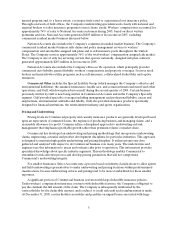 17
17 -
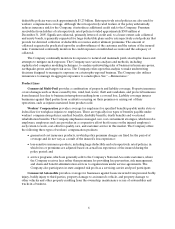 18
18 -
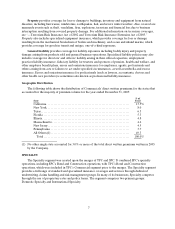 19
19 -
 20
20 -
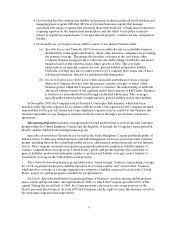 21
21 -
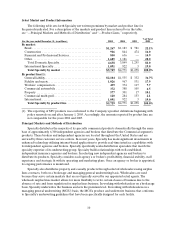 22
22 -
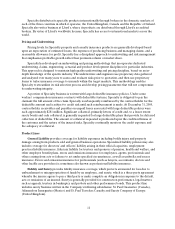 23
23 -
 24
24 -
 25
25 -
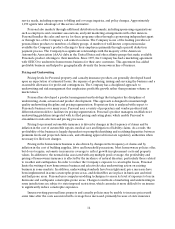 26
26 -
 27
27 -
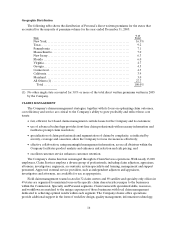 28
28 -
 29
29 -
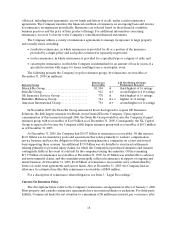 30
30 -
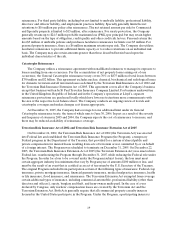 31
31 -
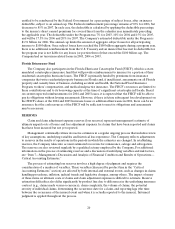 32
32 -
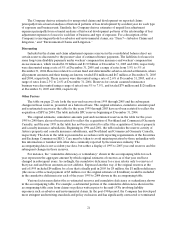 33
33 -
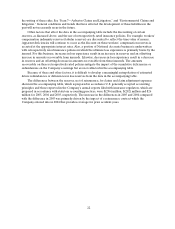 34
34 -
 35
35 -
 36
36 -
 37
37 -
 38
38 -
 39
39 -
 40
40 -
 41
41 -
 42
42 -
 43
43 -
 44
44 -
 45
45 -
 46
46 -
 47
47 -
 48
48 -
 49
49 -
 50
50 -
 51
51 -
 52
52 -
 53
53 -
 54
54 -
 55
55 -
 56
56 -
 57
57 -
 58
58 -
 59
59 -
 60
60 -
 61
61 -
 62
62 -
 63
63 -
 64
64 -
 65
65 -
 66
66 -
 67
67 -
 68
68 -
 69
69 -
 70
70 -
 71
71 -
 72
72 -
 73
73 -
 74
74 -
 75
75 -
 76
76 -
 77
77 -
 78
78 -
 79
79 -
 80
80 -
 81
81 -
 82
82 -
 83
83 -
 84
84 -
 85
85 -
 86
86 -
 87
87 -
 88
88 -
 89
89 -
 90
90 -
 91
91 -
 92
92 -
 93
93 -
 94
94 -
 95
95 -
 96
96 -
 97
97 -
 98
98 -
 99
99 -
 100
100 -
 101
101 -
 102
102 -
 103
103 -
 104
104 -
 105
105 -
 106
106 -
 107
107 -
 108
108 -
 109
109 -
 110
110 -
 111
111 -
 112
112 -
 113
113 -
 114
114 -
 115
115 -
 116
116 -
 117
117 -
 118
118 -
 119
119 -
 120
120 -
 121
121 -
 122
122 -
 123
123 -
 124
124 -
 125
125 -
 126
126 -
 127
127 -
 128
128 -
 129
129 -
 130
130 -
 131
131 -
 132
132 -
 133
133 -
 134
134 -
 135
135 -
 136
136 -
 137
137 -
 138
138 -
 139
139 -
 140
140 -
 141
141 -
 142
142 -
 143
143 -
 144
144 -
 145
145 -
 146
146 -
 147
147 -
 148
148 -
 149
149 -
 150
150 -
 151
151 -
 152
152 -
 153
153 -
 154
154 -
 155
155 -
 156
156 -
 157
157 -
 158
158 -
 159
159 -
 160
160 -
 161
161 -
 162
162 -
 163
163 -
 164
164 -
 165
165 -
 166
166 -
 167
167 -
 168
168 -
 169
169 -
 170
170 -
 171
171 -
 172
172 -
 173
173 -
 174
174 -
 175
175 -
 176
176 -
 177
177 -
 178
178 -
 179
179 -
 180
180 -
 181
181 -
 182
182 -
 183
183 -
 184
184 -
 185
185 -
 186
186 -
 187
187 -
 188
188 -
 189
189 -
 190
190 -
 191
191 -
 192
192 -
 193
193 -
 194
194 -
 195
195 -
 196
196 -
 197
197 -
 198
198 -
 199
199 -
 200
200 -
 201
201 -
 202
202 -
 203
203 -
 204
204 -
 205
205 -
 206
206 -
 207
207 -
 208
208 -
 209
209 -
 210
210 -
 211
211 -
 212
212 -
 213
213 -
 214
214 -
 215
215 -
 216
216 -
 217
217 -
 218
218 -
 219
219 -
 220
220 -
 221
221 -
 222
222 -
 223
223 -
 224
224 -
 225
225 -
 226
226 -
 227
227 -
 228
228 -
 229
229 -
 230
230 -
 231
231 -
 232
232 -
 233
233 -
 234
234 -
 235
235 -
 236
236 -
 237
237 -
 238
238 -
 239
239 -
 240
240 -
 241
241 -
 242
242 -
 243
243 -
 244
244 -
 245
245 -
 246
246 -
 247
247 -
 248
248 -
 249
249 -
 250
250 -
 251
251 -
 252
252 -
 253
253 -
 254
254 -
 255
255 -
 256
256 -
 257
257 -
 258
258
 |
 |
15
rate regulation. The pace at which an insurer can change rates in response to increased costs depends, in
part, on whether the applicable state law requires prior approval of rate increases or notification to the
regulator either before or after a rate change is imposed. In states with prior approval laws, rates must be
approved by the regulator before being used by the insurer. In states having “file-and-use” laws, the insurer
must file rate changes with the regulator, but does not need to wait for approval before using the new rates.
A “use-and-file” law requires an insurer to file rates within a period of time after the insurer beginsusing
the new rate. Approximately one-half of the states require prior approval of most rate changes.
Independent agents either submit applications to the Company’s service centers for underwriting
review, quote, and issuance or they utilize one of its automated quote and issue systems. Automated
transactions are edited by the Company’s systems andissued if they conform to established guidelines.
Exceptions are reviewed by underwriters in the Company’s business centers. Audits are conducted by
business center underwriters and agency managers, on a systematic sampling basis,across all of the
Company’s independent agency generated business. Each agent is assigned to a specific employee or team
of employees responsible for working with the agent on business plan development, marketing, and overall
growth and profitability. The Company uses agency level management information to analyze and
understand results and to identify problems and opportunities.
The Personal products sold through additional marketing channels utilize the same quote and
issuance systems discussed previously and exceptions are underwritten by the Company’s employees.
Underwriters work with Company management on business plan development, marketing, and overall
growth and profitability. Channel-specific production and claim information is used to analyze results and
identify problems and opportunities.
Product Lines
The primary coverages in Personal are personal automobile and homeowners insurance sold to
individuals. Personal had approximately 6.6 million policies in force at December 31, 2005.
Personal Automobile provides coverage for liability to others for both bodily injury and property
damage and for physical damage to an insured’s own vehicle from collision and various other perils. In
addition, many states require policies to provide first-party personal injury protection, frequently referred
to as no-fault coverage.
Homeowners and Other provides protection against losses to dwellings and contents from a wide
variety of perils, as well as coverage for liability arising from ownership or occupancy. The Company writes
homeowners insurance for dwellings, condominiums and rental property contents. The Company also
writes coverage for personal watercraft, personal articles such as jewelry, and umbrella liability protection.
